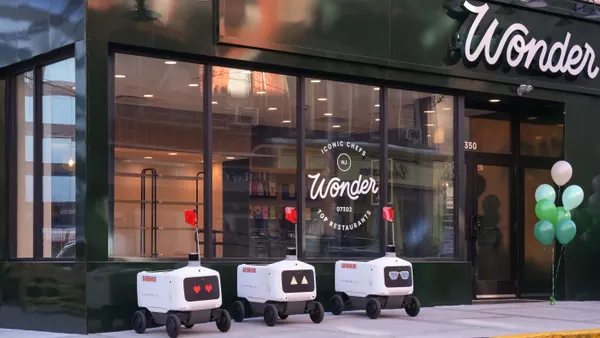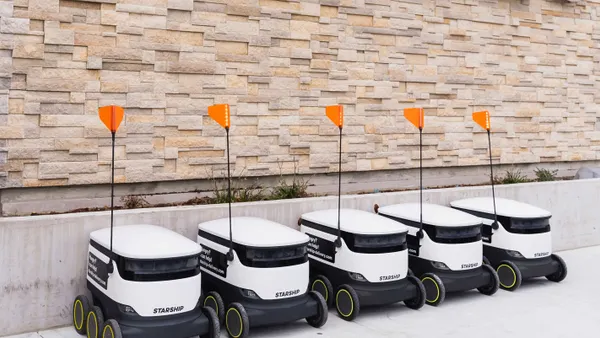Dive Brief:
- New research from The NPD Group shows that the number of restaurant meals consumed at home increased by 2% year-over-year, now accounting for 32% of all restaurant traffic. Dining at a restaurant made up 37% of all visits, but remained flat compared to 2017.
- The majority of consumers who eat at home are single adults with six-figure incomes. Families and groups of five or more make up 31% of foodservice meals eaten at home.
- The 2% increase entails all restaurant segments. Dinner represents nearly half of all at-home foodservice occasions, but breakfast and lunch showed the strongest growth within the past year.
Dive Insight:
There is a confluence of trends driving the increasing demand to stay at home — among them, streaming entertainment services such as Netflix, Amazon-inspired shopping and foodservice delivery from every restaurant concept imaginable (it's not just pizza and Chinese food anymore). Also, the number of employees working from home continues to grow. According to the State of the Remote Job Marketplace report from FlexJobs, there are now 3.9 million Americans — or 2.9% of the total U.S. workforce — who work from home at least 50% of the time.
Another potential factor driving this trend is the desire to save money. Although delivery typically comes with added fees and slightly higher checks for many brands like McDonald's, consumers cite saving money as a major driver to stay home and avoid potentially unplanned spending opportunities. According to research from Mintel, nearly 69% of consumers said the desire to save money is a major driver to stay home versus going out, for example. Millennials in particular are mindful of conservative spending, having come of age during the Great Recession.
David Portalatin, NPD food industry advisor and author of "Eating Patterns in America," said in the NPD Group's press release that this trend isn't expected to change anytime soon, adding that foodservice operators can take advantage by offering innovative ready-to-eat meal solutions. Chick-fil-A's meal kit test is one such example.
To keep up, restaurants are jumping into delivery — and off-premise business in general — in droves. A recent study conducted by CHD Expert found takeout for pickup is projected to generate $124 billion in sales this year, while takeout for direct delivery from a restaurant is expected to hit $32 billion. Takeout with delivery from a third-party delivery company is expected to grow to $13 billion, and catering for pickup or delivery is set to hit $40 billion.
Restaurants with no plan to meet consumers where they want to be — increasingly at home — will quickly be at a disadvantage. But that's easier said than done. Do restaurants rely on third-party aggregates to scale quickly, or do they maintain cost and brand control by creating their own delivery fleets — an undertaking that is costly (and logistically challenging) upfront but saves on hefty delivery fees and potential reputation blemishes?
Whatever the solution, one thing is clear — delivery has evolved into a must-have for restaurant operators.











